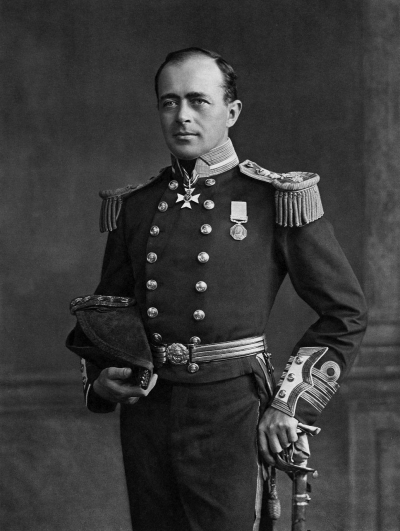The Terra Nova Expedition, officially the British Antarctic Expedition, was an expedition to Antarctica which took place between 1910 and 1913. Led by Captain Robert Falcon Scott, the expedition had various scientific and geographical objectives. Scott wished to continue the scientific work that he had begun when leading the Discovery Expedition from 1901 to 1904, and wanted to be the first to reach the geographic South Pole. He and four companions attained the pole on 17 January 1912, where they found that a Norwegian team led by Roald Amundsen had preceded them by 34 days. Scott's party of five died on the return journey from the pole; some of their bodies, journals, and photographs were found by a search party eight months later.
The expedition, named after its supply ship, was a private venture financed by public contributions and a government grant. It had further backing from the Admiralty, which released experienced seamen to the expedition, and from the Royal Geographical Society (RGS). The expedition's team of scientists carried out a comprehensive scientific programme, while other parties explored Victoria Land and the Western Mountains. An attempted landing and exploration of King Edward VII Land was unsuccessful. A journey to Cape Crozier in June and July 1911 was the first extended sledging journey in the depths of the Antarctic winter.
For many years after his death, Scott's status as tragic hero was unchallenged and few questions were asked about the causes of the disaster which overcame his polar party. In the final quarter of the 20th century the expedition came under closer scrutiny, and more critical views were expressed about its organization and management. The degree of Scott's personal culpability and, more recently, the culpability of certain expedition members, remains controversial.
Captain Robert Falcon Scott (6 June 1868 – c. 29 March 1912) was a Royal Navy officer and explorer who led two expeditions to the Antarctic regions: the Discovery expedition of 1901–1904 and the ill-fated Terra Nova expedition of 1910–1913. On the first expedition, he set a new southern record by marching to latitude 82°S and discovered the Antarctic Plateau, on which the South Pole is located. On the second venture, Scott led a party of five which reached the South Pole on 17 January 1912, less than five weeks after Amundsen's South Pole expedition.
A planned meeting with supporting dog teams from the base camp failed, despite Scott's written instructions, and at a distance of 162 miles (261 km) from their base camp at Hut Point and approximately 12.5 miles (20 km) from the next depot, Scott and his companions died. When Scott and his party's bodies were discovered, they had in their possession the first Antarctic fossils ever discovered. The fossils were determined to be from the Glossopteris tree and proved that Antarctica was once forested and joined to other continents.Before his appointment to lead the Discovery expedition, Scott had a career as a naval officer in the Royal Navy. In 1899, he had a chance encounter with Sir Clements Markham, the president of the Royal Geographical Society, and thus learned of a planned Antarctic expedition, which he soon volunteered to lead. Having taken this step, his name became inseparably associated with the Antarctic, the field of work to which he remained committed during the final 12 years of his life.
Following the news of his death, Scott became a celebrated hero, a status reflected by memorials erected across the UK. However, in the last decades of the 20th century, questions were raised about his competence and character. Commentators in the 21st century have regarded Scott more positively after assessing the temperature drop below −40 °C (−40 °F) in March 1912, and after re-discovering Scott's written orders of October 1911, in which he had instructed the dog teams to meet and assist him on the return trip.

1912Jan, 17
Captain Robert Falcon Scott reaches the South Pole, one month after Roald Amundsen.
Choose Another Date
Events on 1912
- 6Mar
Airship
Italo-Turkish War: Italian forces become the first to use airships in war, as two dirigibles drop bombs on Turkish troops encamped at Janzur, from an altitude of 6,000 feet. - 15Apr
Sinking of the RMS Titanic
The British passenger liner RMS Titanic sinks in the North Atlantic at 2:20 a.m., two hours and forty minutes after hitting an iceberg. Only 710 of 2,227 passengers and crew on board survive. - 14Oct
Theodore Roosevelt
While campaigning in Milwaukee, the former President of the United States, Theodore Roosevelt, is shot and mildly wounded by John Schrank, a mentally-disturbed saloon keeper. With the fresh wound in his chest, and the bullet still within it, Mr. Roosevelt still carries out his scheduled public speech. - 17Oct
First Balkan War
Bulgaria, Greece and Serbia declare war on the Ottoman Empire, joining Montenegro in the First Balkan War. - 26Oct
Thessaloniki
First Balkan War: The Ottoman occupied city of Thessaloniki, is liberated and unified with Greece on the feast day of its patron saint Demetrius. On the same day, Serbian troops captured Skopje.

 English
English  español
español  français
français  português
português  русский
русский  العربية
العربية  简体中文
简体中文 